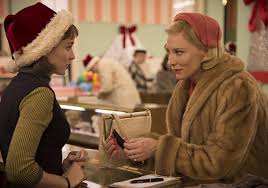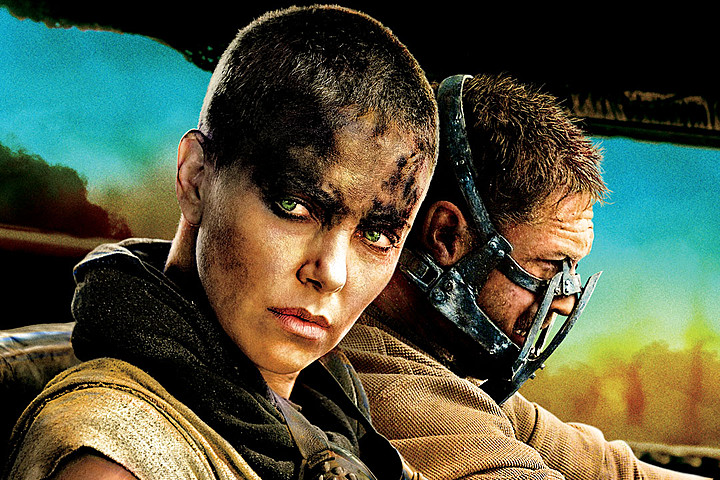Interview: The Blonde at the Film
Posted on December 8, 2015 at 3:50 pm
Cameron is The Blonde at the Film, and her blog on vintage movie classics is one of my favorites. I especially love the History Through Hollywood series where she traces technology and culture as portrayed over the years in films. Ever wondered about how everyone in old movies drinks cocktails? Or why old-time phone numbers began with words instead of numbers? Her explanations are lively and informative.

I am very grateful to Cameron for taking time to answer my questions and I look forward to keeping up with her blog.
Has the availability of old films via Netflix, TCM, and other outlets widened the audience for vintage movies?
I definitely think so! Old films are more available now than ever, which is wonderful. TCM has been especially instrumental in reviving interest in old movies, and I use a great site called ClassicFlix.com that stocks just about anything you might want to rent. Although Netflix doesn’t have a huge selection, their streaming service has helped introduce people to classic movies. For example, a lot of my readers first find my site because they search for some variation of “classic movies to stream on Netflix” and land on my “Netflix Instant: Five Classic Films” posts.
Blogs and social media outlets like tumblr and pinterest have also helped spike interest in these classic films and stars. There is a thriving community of classic movie fans online, and it’s great that people are interested and that these films are so accessible today.
Do you have an example of a movie that was popular when it came out but has not stood the test of time? What about one that was neglected on its release but now is appreciated by audiences?
I immediately think of Esther Williams, a national champion swimmer who was discovered by MGM when she was performing in the Aquacade, a live water extravaganza. She became a huge star, and her films were incredibly popular for over a decade, but today she’s not nearly as well known as some of her contemporaries. Her movies are big Technicolor musicals with lavishly produced “water ballets,” and although I still find them delightful, audience tastes have changed quite a bit from Williams’ heyday. Films like Neptune’s Daughter (1949) or Easy to Love (1953) made MGM a healthy profit, but they aren’t as timeless as other classics.
A famous flop-turned-classic is Bringing Up Baby (1938), which is one of my favorites. It stars legends Katharine Hepburn and Cary Grant, and was directed by Howard Hawks, but when it was released, audiences weren’t nearly as enamored with it as people are today. For one thing, Hepburn had recently been named “box office poison,” and she wasn’t bringing in the crowds at that point in her career. But its lackluster performance was also due to its over-the-top wackiness. Its one of the most “screwball” of all the screwball comedies, so if you expect the characters to make rational sense, you’ll be disappointed. But if you embrace the crazy, you’ll probably have a great time. Fortunately, it’s now adored as the screwball masterpiece it is.
How did you begin to get interested in old movies and which were the ones you first loved?
We didn’t watch much TV when I was little, but my parents would take me to the public library and let me check out VHS tapes of old movies. I don’t know why, but I was hooked immediately. I first fell for 1950s musicals like Singin’ in the Rain (1952) and Seven Brides for Seven Brothers (1954), but I watched anything I could find. And at the time, there wasn’t much! I exhausted the library’s collection and my local video store’s “Classic” section, and became a Turner Classic Movies addict. I also read everything I could find about classic Hollywood, and the more I learned and watched, the more fascinated I became.
I find that it is immediately obvious when you are watching a film whether it was made in the 1930’s or 40’s or 50’s or made later and depicts an earlier era. Do you agree? What are the giveaways?
I absolutely agree. I think that no matter how hard we try, the current age sneaks in. You can see that happening in the classic era, too—for example, in The Harvey Girls (1946), which is set in the 1880s, Judy Garland and the other actresses sport 1940s hairstyles and makeup. Today we prize historical accuracy far more than they did in the studio era, but it’s still impossible to be perfect. If a filmmaker went for complete accuracy, the movie might become cartoonish or odd just because styles, fashion, architecture, language, etc., have changed so much. Also, the technology is so different; sound, color design, special effects, and other elements make movies look and sound differently depending on when they were made. In the 1940s, for instance, Technicolor films often featured a bright, saturated, bold palette with plenty of hot pinks, cyan, and chartreuse, but you don’t see that look today, even in films set in the 1940s. Part of this disjuncture is because movies don’t present “reality”—and especially not in the studio era! But that’s one reason I love old movies so much. When you watch one, especially a musical, you’re watching a dream world, not real life. But you can learn a lot about how people lived and what they enjoyed watching from the vision that movies presented. But don’t always trust their version of historical events!
How did you get interested in tracing technology and culture by watching old movies?
I can remember being confused by a lot of what I saw in old movies when I first started watching them as a kid. The clothes, homes, telephones, cars, and even the language seemed incredibly foreign. I didn’t understand why women were traveling to Reno to get divorced, or why American characters spoke in British accents, for example. But those disconnects fascinated me. After all, these are the films my grandparents went to see in theaters! I’m not that far removed from that era, but the world onscreen looks so different! As I continued watching I realized I was accidentally picking up a lot of information about things like fashion, courtship, travel, and even doughnuts.
Old movies are a great way to learn about the past, and I love writing about that in my “History Through Hollywood” series. I think of classic movies as inadvertent time capsules, packed with little details that find their way into films just because they were a normal part of life. It’s really interesting to me to learn why characters drink champagne out of shallow-bowled coupes instead of flutes, for instance, or why telephone numbers included words until the 1960s.
And sometimes what is left out of movies can tell you a lot, too. Our rating system only dates from 1968, and before that, the Production Code Administration, which was Hollywood’s self-censorship body, governed what could and could not be onscreen from 1934 until the 1960s. The Code was designed to keep anything “objectionable” out of the movies, and covered broad topics like violence and sex, but also stretched to tiny details such as how many seconds a kiss could last or the use of specific words. (The Code helped make classic movies a great option for kids today.) It’s important to remember that sometimes old movies do not necessarily reflect the reality of the time, but instead show the power of the Code and an era’s social mores and values.
I also try to make old films more accessible and watchable, so I like to provide context and explain why these movies seem “tame” or different from today’s films. I think that if a viewer comes to them cold, he or she can get confused, bored, or just find the movies silly because the world onscreen can seem really foreign. I hope that by tracing cultural and technological change, and trying to explain why an old movie looks and sounds the way it does, viewers who are new to classic films might enjoy them even more.
If you could keep one aspect of early telephone technology, what would it be?
There isn’t anything quite as glamorous as a gorgeous, sculpted white handset in the perfectly manicured hand of a legendary star! And although I love the convenience of my smartphone, it might be fun to rely on an operator once in a while!









